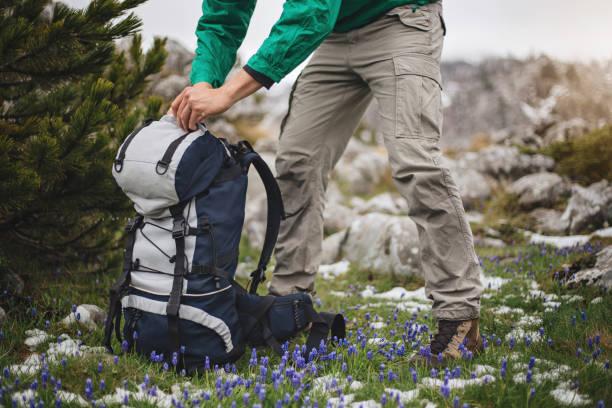Having the right backpack can make all the difference when it comes to rucking. Whether you’re a beginner or a seasoned enthusiast, choosing a high-quality rucking backpack ensures durability, comfort, and proper weight distribution. This guide explores the best rucking backpacks, top brands, and essential tips to enhance your training experience.
What Is the Best Rucking Backpack for Your Needs?
Key Features of the Best Rucking Backpacks
When shopping for a rucking backpack, keep these features in mind:
- Durability
- Material: Look for 1000D Cordura nylon. It is known for its strength and water resistance. This ensures your backpack withstands heavy use in any weather.
- Reinforced Stitching: Strong seams and bar-tack stitching prevent the bag from tearing under heavy loads.
- Capacity
- Beginners: Start with 20-30 liters, which can hold essential weights and gear without being overwhelming.
- Advanced Users: Larger packs (35-45 liters) accommodate heavier weights and longer training sessions.
- Comfort
- Padded Shoulder Straps: Prevent shoulder fatigue during extended use.
- Hip Belt: Transfers weight from shoulders to hips, reducing strain.
- Ventilation: Mesh panels keep your back cool during long rucks.
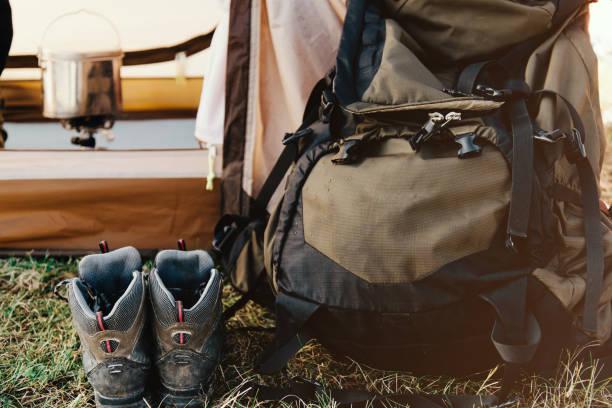
Why Choosing the Right Rucking Backpack Matters
A well-designed rucking backpack ensures proper weight distribution, minimizes stress on your joints, and reduces the risk of injury. Investing in a quality pack also saves money in the long run as it endures years of training.
Top Brands and Options
- GORUCK GR1: Designed for durability, this pack is perfect for both training and travel. Its minimalist design makes it versatile.
- GORUCK Rucker 4.0: Tailored for rucking workouts, it includes weight plate pockets and padded straps for maximum comfort.
- 5.11 Tactical Rush24: Ideal for those who want a military-style backpack with excellent storage and durability.
What Should You Know About General Rucking Backpacks?
Rucking backpacks are more than just standard bags. They are designed to carry weight comfortably and withstand intense physical activities. Understanding their unique features and variations helps you choose the right one for your needs.
What Is a Rucking Backpack?
A rucking backpack is a specialized pack designed to carry weighted loads during physical activities like walking or hiking, known as rucking. Its primary purpose is to help users improve strength, endurance, and cardiovascular health by adding resistance to their workouts.
Key purposes of a rucking backpack:
- Fitness Training: Rucking is a low-impact exercise ideal for building stamina and burning calories.
- Weighted Workouts: The backpack evenly distributes weight, making it safer and more comfortable for the user.
- Versatility: Apart from fitness, these backpacks can be used for outdoor adventures or as durable everyday carry options.
Differences From Regular Backpacks
Rucking backpacks are distinct from standard backpacks in several ways:
- Durability: Made from heavy-duty materials like 1000D Cordura nylon, they are designed to handle significant weight and rough use. Regular backpacks, in contrast, are not built to sustain such loads.
- Weight Distribution: Rucking backpacks have ergonomic designs, including padded shoulder straps and hip belts, ensuring weight is evenly distributed to reduce strain.
- Weight Capacity: Rucking packs are designed to carry heavier loads—20-50 pounds or more—while regular backpacks often fail under such stress.
- Added Features: These backpacks often include MOLLE webbing, reinforced stitching, and compartments for weight plates, making them more versatile than standard packs.
How Do Rucking Packs Vary?
Rucking packs come in a wide range of sizes, materials, and features to suit different needs. Let’s explore their variations in detail.
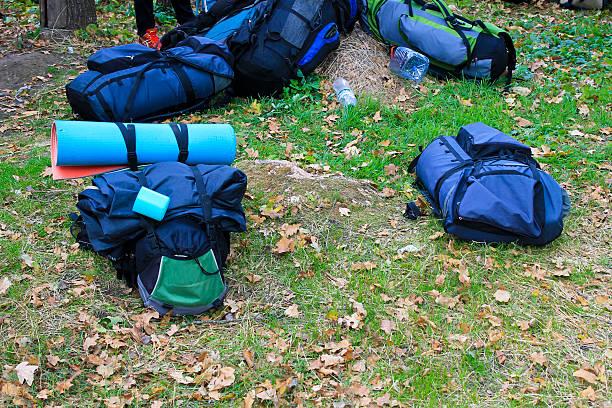
Sizes
- Small Packs (15-20 liters): Ideal for short rucks or carrying lighter weights. Suitable for beginners.
- Medium Packs (21-30 liters): The most common size, providing a balance of capacity and comfort for weights and gear.
- Large Packs (31-45 liters): Designed for advanced ruckers or those going on longer treks with more equipment.
Materials
Rucking backpacks are crafted with durability in mind:
- Cordura Nylon: The gold standard for rucking packs, offering water resistance, abrasion resistance, and long-lasting performance.
- Polyester: Used in budget models, it’s lighter but less durable than nylon.
- Reinforced Stitching: Double or triple stitching is essential to withstand the strain of heavy weights.
- Waterproof Coatings: Keeps gear dry during outdoor activities.
Features
The best rucking backpacks include thoughtful features to enhance functionality:
- MOLLE Webbing: Modular Lightweight Load-carrying Equipment (MOLLE) is a system of straps for attaching extra pouches or gear.
- Weight Plate Pockets: Internal compartments designed to hold flat weights securely.
- Padded Straps and Hip Belts: Reduce pressure on shoulders and distribute weight effectively.
- Hydration Bladders: Integrated compartments for water reservoirs to keep you hydrated during long rucks.
Comparison: Rucking Packs vs. Hiking Backpacks
| Feature | Rucking Backpacks | Hiking Backpacks |
| Weight Capacity | Designed for heavy weights (20-50 lbs or more) | Focused on lightweight loads for long-distance hiking. |
| Durability | Made from tough materials like Cordura nylon | Typically lighter materials to prioritize comfort. |
| Weight Distribution | Ergonomic design with reinforced straps and belts | Similar designs but not optimized for heavy weights. |
| Features | Includes MOLLE webbing and weight plate pockets | Features like trekking pole loops and hydration ports. |
| Purpose | Built for fitness and strength training | Built for carrying camping or hiking essentials. |
How Do You Choose the Best Rucking Backpack?
What are the best options for rucking backpacks?
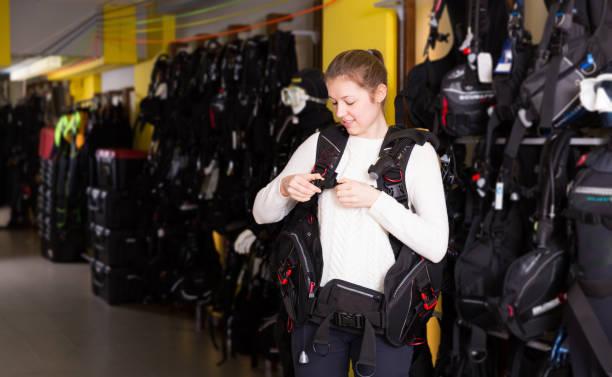
1. GORUCK GR1
Overview: The GORUCK GR1 is renowned for its exceptional durability and versatility. It’s constructed from 1000D Cordura nylon and features a minimalist design suitable for both rucking and everyday use.
Features:
- Available in 21L and 26L sizes.
- Padded shoulder straps and a reinforced back panel for comfort.
- The internal sleeve can hold a laptop or ruck plate securely.
- MOLLE webbing for customization.
Pros:
- Extremely durable materials and construction.
- Versatile for various uses beyond rucking.
- Lifetime warranty.
Cons:
- Higher price point compared to other options.
- Minimal internal organization.
2. GORUCK Rucker
Overview: Designed specifically for rucking, the GORUCK Rucker offers features tailored to weighted training.
Features:
- Available in 20L and 25L sizes.
- Padded shoulder straps and an ergonomic lumbar support pad.
- Multiple internal pockets are designed to securely hold ruck plates.
- Hydration bladder compatibility.
Pros:
- Purpose-built for rucking with weight-specific features.
- Comfortable for extended use.
- Durable construction.
Cons:
- Less versatile for non-rucking activities.
- Slightly heavier due to added padding and features.
3. 5.11 Tactical Rush12
Overview: A budget-friendly alternative, the 5.11 Tactical Rush12 offers durability and functionality suitable for rucking.
Features:
- 24L capacity.
- Made from water-resistant 1050D nylon.
- Multiple compartments for organization.
- MOLLE webbing for customization.
Pros:
- Affordable price point.
- Durable materials.
- Ample storage and organization options.
Cons:
- Less specialized for rucking compared to GORUCK options.
- May lack some comfort features for extended use.
Which rucking backpack is best with weights?
For rucking with weights, the GORUCK Rucker stands out due to its design tailored for weighted training. It features multiple internal pockets specifically designed to hold ruck plates securely, preventing movement during your workout. The ergonomic lumbar support and padded shoulder straps enhance comfort, making it ideal for extended rucking sessions.
Importance of Weight Compatibility: Using a backpack designed to carry weights ensures that the load remains stable, reducing the risk of injury. Features like secure weight compartments and sturdy construction are essential for safely incorporating weights into your rucking routine.
Recommendation: If your primary focus is weighted rucking, the GORUCK Rucker is highly recommended for its specialized features and comfort. For those seeking a more versatile option that can transition between rucking and everyday use, the GORUCK GR1 is a durable and adaptable choice.
Investing in a quality rucking backpack that aligns with your training goals and provides the necessary support and durability is crucial for a safe and effective rucking experience.
Read More: 10 day travel packing list
What Are the Differences Between Military Rucksacks and Civilian Backpacks?
Military rucksacks and civilian backpacks are designed for different purposes, and their features reflect this. Military rucksacks prioritize durability, modularity, and the ability to carry heavy loads under extreme conditions. Civilian backpacks, on the other hand, focus more on comfort, style, and convenience for everyday use.
What Rucksack Does the US Military Use?
The US military primarily uses MOLLE (Modular Lightweight Load-carrying Equipment) rucksacks. These are highly versatile and durable, designed to meet the rigorous demands of military operations.
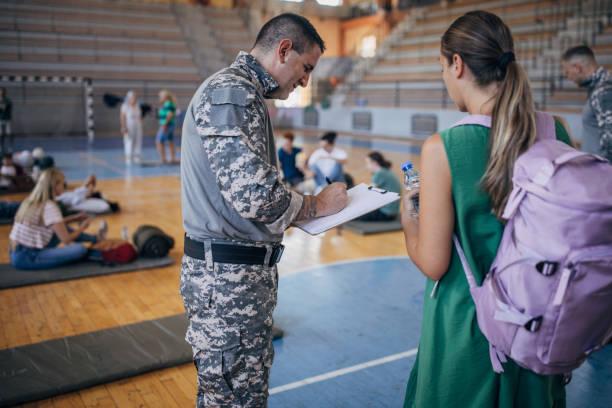
Specifications of Military-Grade Rucksacks
- Material:
- Typically made of 1000D Cordura nylon, which is water-resistant, tear-resistant, and rugged.
- Designed to withstand harsh environments, from desert heat to arctic cold.
- Capacity:
- Large capacity, often 50 liters or more, to accommodate mission-critical gear such as clothing, food, ammunition, and medical supplies.
- Modularity:
- Features MOLLE webbing, which allows soldiers to attach pouches, tools, and other accessories as needed.
- Customizable to fit specific mission requirements.
- Frames and Support:
- Includes internal or external frames for weight distribution, making it easier to carry heavy loads over long distances.
- Padded straps and hip belts provide extra support.
- Durability:
- Reinforced stitching and waterproof coatings ensure that the rucksack lasts through intense use.
Design and Durability
- Design: Military rucksacks are built with functionality in mind, often lacking aesthetic appeal but excelling in practicality. They include multiple compartments for organization and accessibility.
- Durability: Military-grade rucksacks are tested for reliability under extreme stress, ensuring they can handle rough terrain, heavy rain, and frequent wear.
Can Civilians Wear Military Backpacks?
Yes, civilians can legally purchase and use military backpacks. These are popular among outdoor enthusiasts, hikers, and preppers because of their durability and modularity.
Practical Uses for Civilians
- Hiking and Camping:
- Military rucksacks are excellent for carrying heavy loads and outdoor gear on long treks.
- Their water resistance and durability make them ideal for harsh environments.
- Prepping and Survival:
- Preppers often use military rucksacks as bug-out bags due to their large capacity and modular design.
- Fitness:
- Military packs are also popular for rucking, as their weight distribution and durability are perfect for carrying loads during training.
Comparison of Military and Civilian Styles
- Military Rucksacks:
- Focus on utility, with earthy tones or camouflage patterns.
- Larger and bulkier, designed to carry more weight.
- Civilian Backpacks:
- Available in various styles and colors, catering to personal preferences.
- Lightweight and compact, often more comfortable for everyday use.
What Is the Difference Between a Military Rucksack and a Backpack?
Military rucksacks and civilian backpacks differ significantly in their structure, function, and use.
Structural Differences
- Material:
- Military rucksacks use heavy-duty materials like 1000D Cordura, while civilian backpacks often use lightweight polyester or nylon.
- Compartments:
- Military rucksacks have multiple compartments and MOLLE webbing for modular attachments.
- Civilian backpacks tend to have fewer compartments but may include laptop sleeves or USB charging ports.
- Frames:
- Military rucksacks typically feature internal or external frames for better load distribution.
- Most civilian backpacks do not include frames, as they are designed for lighter loads.
Functional Differences
- Military Rucksacks:
- Built for carrying heavy gear over long distances in rough conditions.
- Modular design allows for customization based on the mission.
- Civilian Backpacks:
- Designed for convenience, comfort, and everyday use, such as carrying school supplies, work essentials, or light hiking gear.
Which Is Better for Specific Activities?
Military Rucksacks:
- Best for heavy-duty tasks, such as rucking, hiking in extreme environments, or survival situations.
Civilian Backpacks:
- Ideal for daily commutes, casual travel, and lightweight activities.
How Do You Use a Rucksack for Exercise and Training?
Using a rucksack for exercise, commonly called rucking, is an excellent way to improve cardiovascular endurance, build strength, and enhance posture. Here’s a detailed guide to making the most of your rucksack for fitness training.
What Is the Best Rucksack for Exercise?
Choosing the right rucksack for exercise is crucial for comfort and safety. Here are the features and examples you should consider:

Features Tailored for Fitness Training
- Durable Construction: Made from high-strength materials like 1000D Cordura nylon to withstand the stress of weighted exercise.
- Weight Compatibility: Integrated weight pockets or compartments to keep weights secure and prevent shifting during movement.
- Ergonomic Design: Padded shoulder straps and a ventilated back panel to reduce strain and improve airflow. A hip belt to transfer weight from your shoulders to your hips, preventing fatigue.
- Hydration Compatibility: A built-in hydration bladder pocket for easy access to water during long training sessions.
- Compact Size: A capacity of 20-30 liters is ideal for exercise-focused rucking. Larger sizes may add unnecessary bulk.
Examples of Backpacks Suited for Exercise
- GORUCK Rucker 4.0: Specifically designed for fitness, with weight plate pockets, padded straps, and water resistance.
- 5.11 Tactical Rush12: A budget-friendly option offering multiple compartments and MOLLE attachments.
- Mystery Ranch 2-Day Assault: Features a lightweight internal frame for added stability.
What Should You Know About Training With a Rucksack?
Rucking offers a low-impact, high-intensity workout when done correctly. Here are essential tips to maximize its benefits:
Tips for Weight Selection and Posture
- Start Light: Beginners should start with a load equal to 10-20% of their body weight, typically around 15-25 pounds. Increase weight gradually to avoid strain or injury.
- Maintain Proper Posture: Keep your shoulders back, core engaged, and neck aligned with your spine. Avoid leaning forward excessively to prevent back pain.
- Balance Your Load: Place heavier items closer to your back and higher in the rucksack for better weight distribution.
Benefits of Incorporating Rucking into Workouts
- Full-Body Strengthening: Builds leg, core, and back muscles as you carry weight over varying terrains. Adds resistance to your cardiovascular exercise for enhanced calorie burning.
- Posture Improvement: Encourages proper alignment of your spine and shoulders, reducing slouching habits.
- Versatility: It can be adapted to include sprints, stair climbs, or obstacle courses for a more challenging workout.
How Do Backpack Weight and Comfort Affect Rucking?
The weight and comfort of your rucksack directly impact the quality of your workout and your safety. Understanding how to manage these factors is essential.
How Heavy Should a Backpack Be for Rucking?
Weight Recommendations for Beginners and Experts
- Beginners: Start with 15-25 pounds to build endurance and proper technique. Focus on short distances, such as 1-3 miles, to adjust to the weight.
- Intermediate and Advanced Ruckers: Gradually increase weight to 35-50 pounds, depending on your fitness level. Include inclines or uneven terrains to increase the intensity.
Risks of Carrying Excessive Weight
- Injury Risk: Overloading can strain your back, shoulders, and knees, leading to long-term injuries.
- Poor Posture: Excessive weight may cause forward-leaning, increasing the likelihood of lower back pain.
- Fatigue: Carrying too much weight can lead to faster exhaustion, reducing workout quality.
What Do You Need to Ruck Comfortably?
Tips for Gear Selection and Organization
- Choose the Right Rucksack: Pick a pack with padded straps, a hip belt, and ventilated panels. Ensure it has compartments to keep gear and weights secure.
- Organize Your Load: Place heavier items closer to your back. Use compression straps to prevent the weight from shifting during movement.
- Essential Accessories
- Hydration System: Keep water easily accessible.
- Comfortable Shoes: Use hiking or rucking shoes with good arch support.
- Weight Plates: Choose flat weights over bulky items for better balance.
Importance of a Hip Belt for Added Support
- A hip belt shifts up to 70% of the load to your hips, reducing strain on your shoulders and back.
- It enhances stability, especially on uneven terrains or longer distances.
Which GORUCK Backpack Should You Choose?
When selecting a GORUCK backpack, it’s essential to align the pack’s features with your specific needs, whether for rucking, daily use, or travel. Here’s a detailed comparison between the GORUCK GR1 and the Rucker, along with insights into their suitability for various activities.
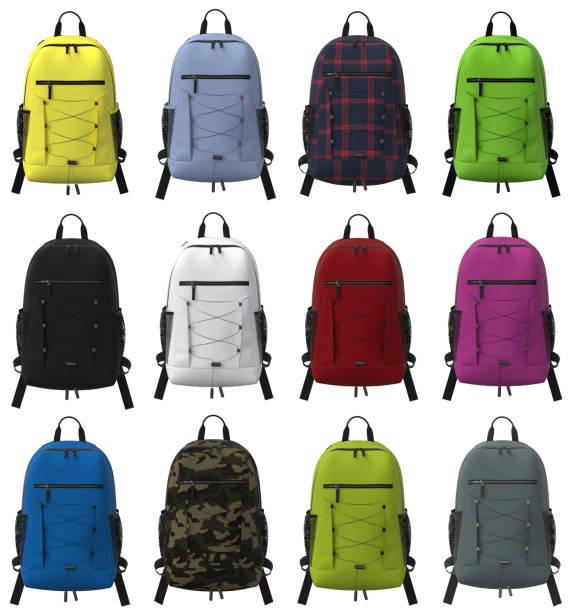
How Does the GR1 Compare to the Rucker?
Both the GR1 and the Rucker are crafted with durability and functionality in mind, but they cater to different purposes.
Design and Features:
- GORUCK GR1:
- Material: Constructed from 1000D Cordura nylon, offering exceptional durability.
- Compartments: Features a bombproof laptop compartment, internal and external pockets, and MOLLE webbing for customization.
- Handles: Equipped with a top handle for versatile carrying options.
- Purpose: Designed as a versatile everyday carry bag suitable for urban environments, travel, and light rucking.
- GORUCK Rucker:
- Material: Also made from 1000D Cordura nylon, ensuring ruggedness.
- Compartments: Includes a dedicated ruck plate pocket, multiple handles (top, bottom, and sides) for exercise versatility, and a hydration bladder loop.
- Handles: Additional bottom and side handles facilitate various workout movements.
- Purpose: Specifically tailored for rucking and fitness training, accommodating weighted workouts and GORUCK events.
Suitability:
- GR1: Ideal for those seeking a multipurpose backpack that transitions seamlessly from daily use to travel, with the added capability for light rucking.
- Rucker: Best suited for individuals focused on rucking as a primary activity, offering features that enhance training efficiency and comfort.
What Is the Best GORUCK Bag for Travel?
When it comes to travel, GORUCK offers several options, each catering to different preferences:
GORUCK GR2:
- Capacity: Available in 34L and 40L sizes, providing ample space for extended trips.
- Features: Dual main compartments that open flat for easy packing, a bombproof laptop compartment, and multiple internal pockets for organization.
- Travel Readiness: Designed to meet carry-on size requirements, making it suitable for air travel.
GORUCK GR3:
- Capacity: Offers a 45L capacity, expandable up to 63L, accommodating longer journeys.
- Features: Similar to the GR2 but with more space, including MOLLE webbing for customization and a bombproof laptop compartment.
- Travel Readiness: Maximizes carry-on dimensions, ideal for those who prefer to travel without checking bags.
For most travelers, the GR2 strikes a balance between capacity and portability, making it a versatile choice for various travel scenarios.
Why Is the GR1 Still a Top Rucking Backpack?
The GORUCK GR1 has maintained its reputation as a premier rucking backpack due to several key factors:
- Durability: Its 1000D Cordura nylon construction ensures it withstands harsh conditions and heavy use.
- Versatility: The GR1’s design allows it to function effectively as a daily carry bag, travel backpack, and rucking pack.
- Comfort: Padded shoulder straps and an ergonomic design provide comfort during extended wear.
- Reputation: As GORUCK’s flagship model, the GR1 has been tested extensively in various environments, earning trust among users.
Its combination of ruggedness, functionality, and adaptability continues to make the GR1 a preferred choice for many rucking enthusiasts.
What Features Make a Rucking Backpack Stand Out?
Not all backpacks are created equal when it comes to rucking. The best rucking backpacks stand out due to specific features that enhance performance, comfort, and durability. Let’s delve into what makes a rucking backpack a must-have for your workouts.
What Is the Best Framed Rucking Backpack?
Benefits of Framed Designs
Framed rucking backpacks incorporate an internal or external frame that provides additional stability and weight distribution. These features make them ideal for heavy loads and long-distance rucks. Here’s why framed designs excel:

- Weight Distribution
- Frames shift the weight from your shoulders to your hips, reducing strain and preventing fatigue during long rucks.
- Stability
- Framed packs maintain the structure of the bag, preventing it from sagging or causing an uneven load.
- This ensures a secure fit, especially during uneven terrain rucking or fast-paced workouts.
- Comfort
- With better weight balance, framed packs are easier on your spine and joints.
- Ventilated back panels on many framed designs reduce sweat buildup.
Top Recommendation: Mystery Ranch 3 Day Assault
- Key Features: Internal frame, adjustable straps, and hydration bladder compatibility.
- Why It Stands Out: Its sturdy frame ensures excellent load stability, making it perfect for both rucking and hiking.
Other Framed Options
- Osprey Atmos AG 65: A lightweight option with an Anti-Gravity suspension system for excellent weight distribution.
- Deuter Aircontact Lite 50+10: Offers customizable frame adjustments and a breathable back system for long-distance comfort.
What Is the Best Hydration Rucker?
Staying hydrated is crucial during any physical activity, and rucking is no exception. A hydration-compatible backpack simplifies this by allowing hands-free access to water.
Benefits of Hydration Rucking Backpacks
- Convenience: Hydration packs let you drink on the go without stopping to unscrew bottles.
- Even Weight Distribution: A full hydration bladder sits flush against your back, minimizing movement.
- Compact Design: Integrated compartments for hydration bladders prevent clutter.
Top Recommendation: CamelBak Motherlode 100L
- Key Features: Includes a 3L hydration bladder, MOLLE webbing, and durable 500D nylon construction.
- Why It Stands Out: Designed for military-grade performance, it excels in hydration management and rugged durability.
Other Hydration-Compatible Packs
- GORUCK Rucker 4.0: Features hydration bladder compatibility and reinforced hydration tube ports.
- Osprey Raptor 14: Best for lighter rucking, with a 2.5L hydration bladder and ventilated back panel.
What Are the Best Beginner Rucking Gear Options?
Rucking for beginners doesn’t require expensive equipment, but starting with the right gear ensures a safer and more enjoyable experience. Here’s a list of essential items and starter-friendly backpacks.
What Gear Should Beginners Use for Rucking?
Affordable and Essential Items
- Backpack
- A beginner doesn’t need a high-end backpack initially. Look for durability, comfort, and storage.
- Recommended Option: 5.11 Tactical Rush12 – Affordable, rugged, and beginner-friendly.
- Weights
- Use a 10-20 lb weight plate or substitute household items like books or sandbags.
- Recommended Option: Rogue Fitness Weight Plates – Flat, easy to carry, and designed for rucking.
- Shoes
- Proper footwear prevents blisters and provides arch support.
- Recommended Option: Merrell Moab 2 Ventilator – Comfortable and great for outdoor use.
- Water Bottle or Hydration Bladder
- Staying hydrated is key during rucks.
- Recommended Option: CamelBak Eddy Water Bottle or a basic hydration bladder.
- Accessories
- Compression Socks: Reduce swelling and improve circulation.
- Tactical Gloves: Protect hands if carrying your pack long distances.
Starter Backpacks With Good Features
- REEBOW Gear Military Tactical Backpack
- Why It’s Great: Affordable with MOLLE webbing, 34L capacity, and durable construction.
- Who It’s For: Beginners on a budget.
- GORUCK Bullet Ruck 10L
- Why It’s Great: Compact and minimalist, perfect for short rucks.
- Who It’s For: Light trainers and casual ruckers.
- Condor 3 Day Assault Pack
- Why It’s Great: Offers plenty of storage space and a hydration bladder compartment.
- Who It’s For: Beginners looking to train for longer distances.
What Is the Best Budget Rucker?
For beginners who don’t want to spend too much, these budget-friendly options provide excellent value:
- 5.11 Tactical Rush12: Affordable, durable, and versatile for rucking and everyday use.
- REEBOW Gear Military Tactical Backpack: Costs less than $50 and offers many features of higher-end packs.
Can Any Backpack Be Used for Rucking?
What Makes a Good Ruck?
Not all backpacks are fit for rucking. While any backpack can carry weight, rucking backpacks are designed for safety, comfort, and efficiency. Here’s what sets them apart:
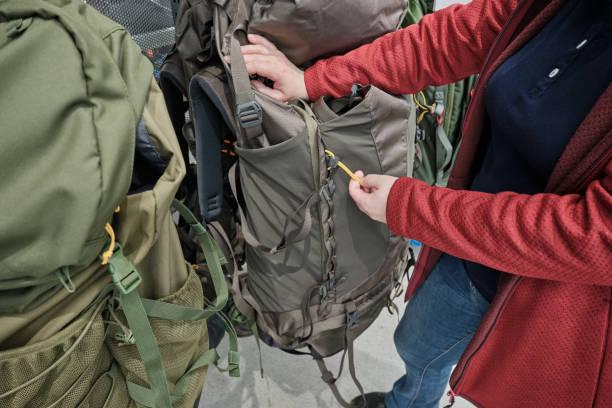
- Durability: Made from tough materials like 1000D Cordura nylon, rucking packs resist tears and wear better than regular backpacks.
- Weight Distribution: Features like padded straps, hip belts, and reinforced back panels evenly distribute weight, reducing strain.
- Secure Weight Placement: Dedicated compartments keep weights stable, unlike regular bags where shifting can cause imbalance.
- Comfort: Ventilated back panels and ergonomic designs support posture and reduce sweating for extended rucks.
Modifications to Regular Backpacks for Rucking
If you don’t have a rucking-specific backpack, you can modify a regular one to make it more suitable:
- Reinforce the Straps
Heavy weights can strain standard backpack straps. Sew additional reinforcement or wrap duct tape around weak points. - Use Weight Plates or Sandbags
Flat weights or compact sandbags prevent shifting inside the bag. Avoid loose items like dumbbells that can move and cause discomfort. - Add Padding
Line the interior with foam or towels to reduce pressure on your back. This also protects the backpack from wear. - Secure the Load
Use compression straps or tie-downs inside the bag to keep weights from moving during your ruck.
While these adjustments can make a regular backpack serviceable for light rucking, investing in a proper rucking backpack is recommended for long-term use and safety.
How Big Is the MOLLE 2 Ruck?
The MOLLE 2 Rucksack is a military-grade backpack widely recognized for its durability, capacity, and modular design. It’s a popular choice for both military personnel and civilian rucking enthusiasts due to its ability to handle heavy loads.
Understanding the MOLLE 2 System
1. Size and Capacity
- The MOLLE 2 Rucksack has a main compartment capacity of 4,000 cubic inches (65 liters), making it ideal for carrying heavy gear or weights.
- With its additional modular pouches, the total storage can expand to 5,000 cubic inches (82 liters).
2. Key Features
- Frame System: The internal frame supports the back, evenly distributing weight to reduce fatigue.
- Modular Design: The MOLLE (Modular Lightweight Load-carrying Equipment) system includes webbing that allows users to attach extra pouches, hydration packs, or other gear.
- Durability: Built from heavy-duty nylon and reinforced stitching, the MOLLE 2 Rucksack can handle weights over 50 pounds with ease.
3. Compatibility for Rucking
- Its large capacity is suitable for advanced ruckers who want to carry heavy loads over long distances.
- The modular attachments make it versatile, allowing you to customize it for various rucking activities like fitness training, hiking, or endurance events.
Why Choose the MOLLE 2 for Rucking?
The MOLLE 2 Rucksack is ideal for rucking if you:
- Need a high-capacity bag for carrying weights and additional gear.
- Prefer a backpack that can adapt to different activities through modular attachments.
- Want a military-grade option that withstands tough conditions?
While its size and frame make it excellent for heavy-duty rucking, the MOLLE 2 may be overkill for casual or beginner ruckers. For shorter sessions or lighter loads, consider a smaller, more streamlined rucking backpack like the GORUCK Rucker.
What Is the Difference Between a Rucksack and a Backpack?
Rucksacks and backpacks are often used interchangeably, but they have distinct differences in design, function, and purpose. Understanding these differences helps you choose the right gear for activities like rucking.
Key Distinctions Between Rucksacks and Backpacks
| Feature | Rucksack | Backpack |
| Design | Typically larger with a flap-over top and drawstring closure. May include multiple external pockets. | A simple zippered design with fewer compartments. |
| Purpose | Built for carrying heavier loads over long distances. Commonly used for hiking, camping, and military activities. | More versatile and used for daily activities like commuting, school, or light travel. |
| Material | Made with durable, heavy-duty materials like canvas or nylon for rugged use. | Often lightweight materials like polyester or nylon for convenience. |
| Weight Capacity | Can carry more weight due to its reinforced design and structure. | Designed for lighter loads, often without reinforcement for heavy weights. |
| Features | May include MOLLE webbing, internal frames, and external straps for attaching gear. | Basic straps and compartments with limited external attachments. |
Which Is Better for Rucking?
Rucksack
Pros:
- Larger capacity for weights, hydration packs, and gear.
- Durable materials withstand rigorous use.
- MOLLE webbing allows customization with extra pouches.
- It often includes a hip belt for improved weight distribution.
Cons:
- Heavier and bulkier.
- Not as versatile for everyday use.
Backpack
Pros:
- Lightweight and compact.
- More comfortable for lighter loads or casual rucks.
- It is suitable for urban rucking or short distances.
Cons:
- Limited capacity for heavy weights.
- Lacks the rugged features required for intense rucking.
Verdict: For serious rucking, a rucksack is better due to its durability, weight capacity, and support features. Backpacks may suffice for beginners or casual rucking but lack the essential features for advanced training.
What Is the Best Rucking Setup for Maximum Comfort?
Proper setup is crucial for a comfortable and effective rucking experience. Here’s how to optimize your gear and technique for the best results.
What Are the Best Setups for Rucking?
1. Balanced Weight Distribution
- Place heavier items like weight plates close to your back and higher in the pack.
- Use compartments or straps to secure the load and prevent shifting.
2. Padded Shoulder Straps and Hip Belts
- Ensure your ruck has padded straps to reduce strain on your shoulders.
- A hip belt transfers weight to your hips, minimizing fatigue on your upper body.
3. Hydration and Ventilation
- Include a hydration bladder for easy access to water.
- Backpacks with mesh panels promote airflow and reduce sweat buildup.
4. Gear Organization
- Use internal compartments for neat packing.
- Keep essentials like snacks, first aid kits, and water accessible in outer pockets.
What Is the Best Overall Rucker?
GORUCK GR1:
- Why It’s Great: Durable, versatile, and designed for heavy rucking and travel.
- Capacity: Comes in 21L and 26L options, suitable for various activities.
- Special Features: Bombproof laptop compartment, MOLLE webbing, and lifetime warranty.
GORUCK Rucker 4.0:
- Why It’s Great: Tailored for fitness-focused rucking with weight plate compatibility.
- Capacity: Available in 20L, 25L, and 30L sizes.
- Special Features: Reflective strip, waterproof bottom panel, and padded straps.
5.11 Tactical Rush12:
- Why It’s Great: Affordable, durable, and functional for beginners.
- Capacity: 24L with multiple compartments and MOLLE webbing.
By selecting the right setup and investing in a high-quality rucking backpack, you can achieve maximum comfort and performance, whether you’re a beginner or a seasoned rucker.
Frequently Asked Questions About the Best Rucking Backpack
What Is the Best Rucking Backpack With Weights?
The GORUCK Rucker 4.0 is built for weighted rucking, with integrated pockets that securely hold plates.
Can Any Backpack Be Used for Rucking?
Technically, yes, but modifying regular backpacks with padding and secure weights may still cause discomfort or damage.
Conclusion: Choose the Right Rucking Backpack
The right rucking backpack enhances your workouts, offering durability, comfort, and weight compatibility. For beginners, affordable options like the 5.11 Tactical Rush12 or REEBOW Gear Military Tactical Backpack are great starts. Advanced users should consider the GORUCK Rucker 4.0 or Mystery Ranch 3 Day Assault for intense training. Prioritize hydration with packs like the CamelBak Motherlode 100L.
You’ll enjoy safer, more effective rucking sessions by selecting a quality backpack tailored to your needs. Start light, maintain proper posture, and reap the fitness rewards!

